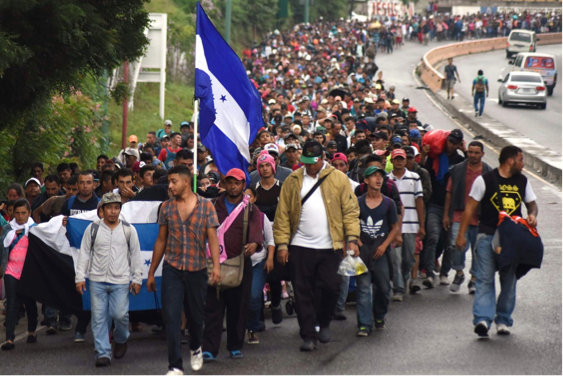 Immigration At The Mexican Border
Immigration At The Mexican Border
In April of 2018 a caravan of people from Guatemala, El Salvador and Honduras gained worldwide attention as the organizers emphasized the group would enter Mexico and then travel north to the American border to enter the United States. Organizers declared that there should be no borders between countries and people should be free to move from country to country. Some think the development of the caravan was in response to the efforts of the new American President, Donald Trump, to have more control over immigration into the United States. News coverage noted that much of 2017 had lowered rates of attempts to immigrate to the United States along the border with Mexico and that was felt to be the result of statements by President Donald Trump in his campaign and then after the election to stop such immigration by building a wall along the U.S.-Mexico border among other efforts. Those statements appear to have had an effect for much of the first year, 2017, of the Trump Administration as year-to-year comparisons showed lowered rates of apprehensions of immigration attempts.
Another Caravan Headed Toward The Border
However the lowered rates ended late in 2017 and have begun to rise most months of 2018. This rise is in the context, now, of a second large caravan of Central Americans, mainly from Honduras, traveling through Guatemala and soon to enter Mexico with the intention of coming to the United States border.[1] [2]
Substantial attention to such immigration efforts was directed to events during the summer of 2014 when tens of thousands of children (unaccompanied minors) from Central America entered the country particularly in the Rio Grande Valley. The numbers overwhelmed the resources of the Federal Government that has the responsibility of patrolling the borders, Customs and Border Patrol, CBP making those personnel deal with child welfare responsibilities and necessitating the Texas Highway Patrol and other Texas Department of Public Safety resources as well as county and municipal authorities to address disorder and organized crime at the border, which is a Federal responsibility.
Immigration Components and Numbers
CBP breaks immigration numbers into three separate categories of Unaccompanied minors (children), Adults and Family Units. These compose the CBP category of Inadmissables. CBP policy is to take children that present themselves at the border to childcare facilities, separating them from parents. This includes children that are traveling with families. Entering the United States without documentation and permission is a law violation. American law and custom is to remove dependent minors from parents or adult providers that are charged with committing crimes and having the state, usually child welfare services, arrange for temporary or permanent custody.
That policy became controversial in the summer of 2018 with various political groups traveling to the border to visit such facilities and calling for an end to these Federal regulations of separating children from families.[3] Those political pressures may have had the impact of increasing the number of families coming to the border instead of adults or unaccompanied children. There seems to be an emerging recognition of those that seek to come to the United States that having a child as part of the group increases the likelihood of clearing Border Patrol stops. The Washington Post has reported DHS statistics for October, yet to be released, which show a 30 percent increase over the comparable period of 2017. Border Patrol agents arrested 16,658 family members in September, the highest one-month total on record and an 80 percent increase from July.[4] The picture below is from an immigrant detention center this week in the Rio Grande Valley.[5] Reports are that this center in McAllen is receiving 3,000 persons from Central America each day. Estimates have been offered of 500,000 in this area for 2018, highest ever.[6] Centers elsewhere in Texas as well as Arizona are reported full. [7]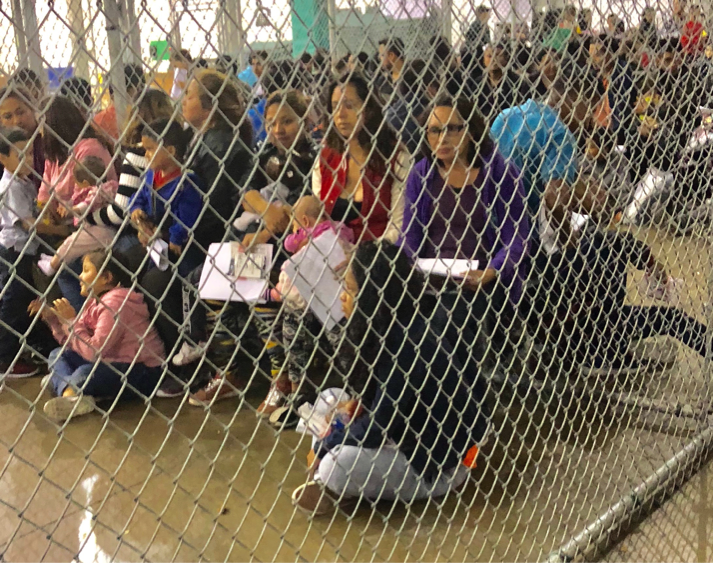 Immigration Holding Facility in McAllen, Texas
Immigration Holding Facility in McAllen, Texas
Impact Of Demographics
These numbers of immigrants reflect the sharp demographic and economic differentials between the United States, Mexico and the countries of Central America. These differentials help to explain why people leave Mexico and Central America to come to the United States and also to increasing degrees, travel even to Canada. The economic growth from increased global trade that was expected to come to these countries to our south has not materialized in sufficient degrees to make attempts to come north less attractive. If robotics and automation continue to replace labor, then economic conditions are not likely to improve thus leading to larger numbers from poorer countries attempting to immigrate to the United States.
Economics, Demography and Education[8]
| Country | Population in Millions | Median Age | Median Education Level | Average Weekly Income |
| U S | 325 | 38 | 14 | $857 |
| Mexico | 130 | 28 | 7 | $190 |
| Guatemala | 17 | 22 | 6 | $60 |
| El Salvador | 6 | 27 | 5 | $70 |
| Honduras | 9 | 23 | 5 | $50 |
| Canada | 37 | 42 | 16 | $986 |
Immigrants with low levels of education will increasingly encounter difficulties finding work and work with incomes that will support the higher costs of living in the United States. These costs to parents illustrate having children. The U.S. Department of Agriculture provides a widely cited guide to estimates of what it costs to have and raise a child to 18 years of age in the United States.[9] In 2017 the costs are estimated to be $233,610.[10] Those costs are born by the family or the state if families do not have sufficient income or if the child does not have a family. In today’s world and in the future, a high school education is not sufficient to secure adequate income and a 2 or 4-year trade or college education is advised. Estimates are $50,000 per year for board, room, books and tuition for students staying away from home. Staying home reduces the cost to about $25,000 with substantial variations between 2 year, 4 year and public and private institutions. Thus raising a child that will be educationally prepared for work and life in the United States, today, requires an expenditure of nearly half a million dollars. This explains part of the reason for the trend of smaller American families and women delaying having children until later in life.
An important question is how fully can the immigrant through work and social participation repay the draw against resources that come from the community. High levels of unemployment and low wage earnings mean that the community must subsidize the immigrant.[11]
Stability of Neighboring Countries
Low income and limited work opportunity in many countries have long played a role in causing immigration to the United States. The hope of the immigrant is better employment and living opportunities. That hope is perhaps greater today than it has been for decades and the result is reflected in rising rates of immigration to the United States and projections for coming decades.
A newer force promoting immigration is the growing violence in Mexico and almost every country of Latin America. Mexico continues to have higher rates of violence in 2018 than in 2017, the year that set records of violence for more than two decades. This violence threatens the integrity of national and state governments in Latin America, is accompanied by organized and transnational criminal organizations and threatens the security of borders in many ways including terrorism efforts.[12]
A third force promoting immigration with populations coming from other parts of the globe may be climate change and failing agriculture. As the United States has seen in 2018 with Hurricane Michael this fall and then for a current example with record rains in the Texas Hill Country, the climate seems to be getting warmer providing more intense storms and weather variability. Crop failures can lead to starvation and there is evidence of this in some of the current immigrant flow. Guatemala, as an example, had serious declines in coffee production from leaf rust that killed coffee plants starting about 2011. Coffee production is an important part of the economy in Guatemala and source of jobs. The rust may have come from wetter and warmer conditions. Rust, warmer conditions and lower coffee prices have contributed to Guatemalan farmers abandoning fields and seeking to migrate to the United States.
Summary
Economic, Political and probably Climatic forces are increasing the numbers seeking to immigrate to the United States. Persons traveling by land will come from the southern border with Mexico. The largest numbers will come to Texas and most heavily to the Rio Grande Valley. The immediate problems are how to maintain order, shelter and feed the immigrants. Communicable disease will be an issue. The numbers and disorder will provide cover for organized crime and terrorists. Immediate costs are in the tens of millions of dollars and farther on the horizon are costs in the billions. There is no ready solution as for many of the immigrants any punishment in the United States is less severe than simply trying to live in many of the communities of Central America.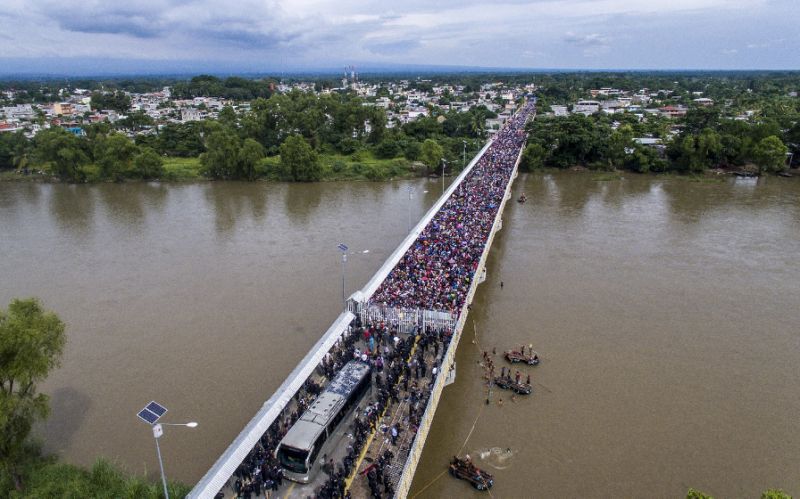 Crossings from Guatemala into Mexico-October 20, 2018
Crossings from Guatemala into Mexico-October 20, 2018
Since 1960 the United States has been the top destination for migrants all over the world with one fifth of the world’s immigrants living here. There are approximately 44 million immigrants in the United States today. There are additionally 11 million unauthorized immigrants in the United States with most residing in California, Texas, New York and Florida. Most of these immigrants come from Mexico and Central America. [13] [14] Estimates are for authorized immigrants to exceed one million a year for years into the future. As the current caravan may suggest, rising rates of unauthorized immigrants are developing and Texas will likely be the initial destination. The initial estimates from areas like McAllen warn that the unauthorized numbers each year will exceed those of authorized immigrants.
These pressures of immigration will affect communities and nations. Housing, feeding, education and health care will be the immediate impact. All of Europe and the economic union OPEC are fracturing over immigration issues with migrant populations there coming from the Middle East and Africa.[15] [16] Millions of persons coming into the United States and with a large percentage first arriving in Texas is a challenge of many dimensions.
Societies and countries develop policies and programs to address external threats. Border controls and standing armies exist to protect against armed invasions. China built its great wall beginning in 771 BC to protect against invaders from the northwest. France built the Maginot Line after World War I to protect against German invasion. The United States and European countries created the North Atlantic Treaty Organization, NATO, to protect against conflicts with the Soviet Union and now Russia. Currently the United States budgets for 54 percent of all federal discretionary spending, a total of $598.5 billion for defense.
What the size of the disruptions these immigration patterns represent and what programs are needed is a complex policy and budgeting decision that now looms for government! The only thing partially clear is the numbers of immigrants can run annually in the millions and continue for years. Here are some graphs we have seen before but none have 2018 data.
[1] https://www.nbcnews.com/politics/immigration/honduran-migrant-caravan-grows-4000-amid-spike-u-s-border-n921286
[2] https://www.nbcnews.com/politics/immigration/honduran-migrant-caravan-grows-4000-amid-spike-u-s-border-n921286
[3] https://www.mysanantonio.com/news/local/article/Rallies-still-planned-in-El-Paso-Tornillo-13012166.php
[4] https://www.washingtonpost.com/world/national-security/record-number-of-families-crossing-us-border-as-trump-threatens-new-crackdown/2018/10/17/fe422800-c73a-11e8-b2b5-79270f9cce17_story.html?noredirect=on &utm_term=.4b1aa83b37fb
[5] https://www.nbcnews.com/news/us-news/mcallen-texas-immigration-processing-center-largest-u-s-n884126
[6] https://riograndeguardian.com/zabaleta-kaplan-immigrant-caging-on-the-texas-mexico-border/
[7] Photo from a colleague visiting an ICE detention center in the Rio Grande Valley
[8] Sources: https://www.cia.gov/library/publications/the-world-factbook/geos/mx.html; https://www.worlddata.info/average-income.php
[9] https://www.cnpp.usda.gov/tools/CRC_Calculator/default.aspx
[10] http://time.com/money/4629700/child-raising-cost-department-of-agriculture-report/
[11] https://cis.org/Report/Record-445-Million-Immigrants-2017
[12] https://cis.org/Bensman/What-New-White-House-National-Strategy-Counterterrorism-Says-about-US-Border-Security
[13] https://www.migrationpolicy.org/article/frequently-requested-statistics-immigrants-and-immigration-united-states#Unauthorized
[14] https://www.dhs.gov/immigration-statistics/yearbook/2017
[15] https://www.wsj.com/articles/immigration-standoff-shakes-merkels-fragile-government-1528912541
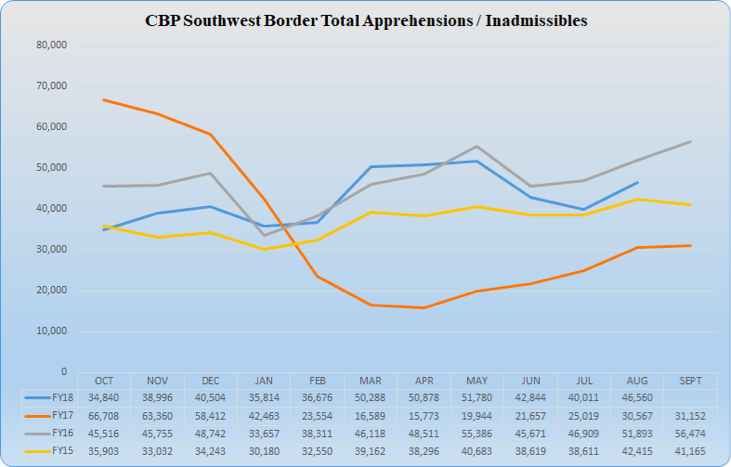
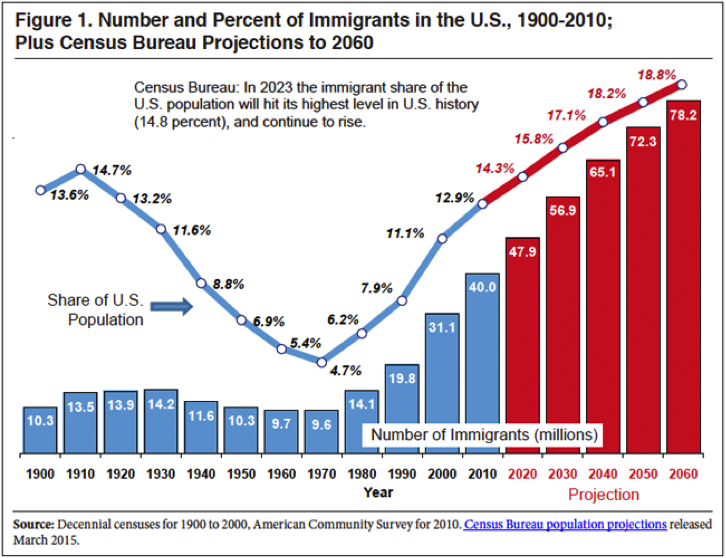
 REFERENCES
REFERENCES